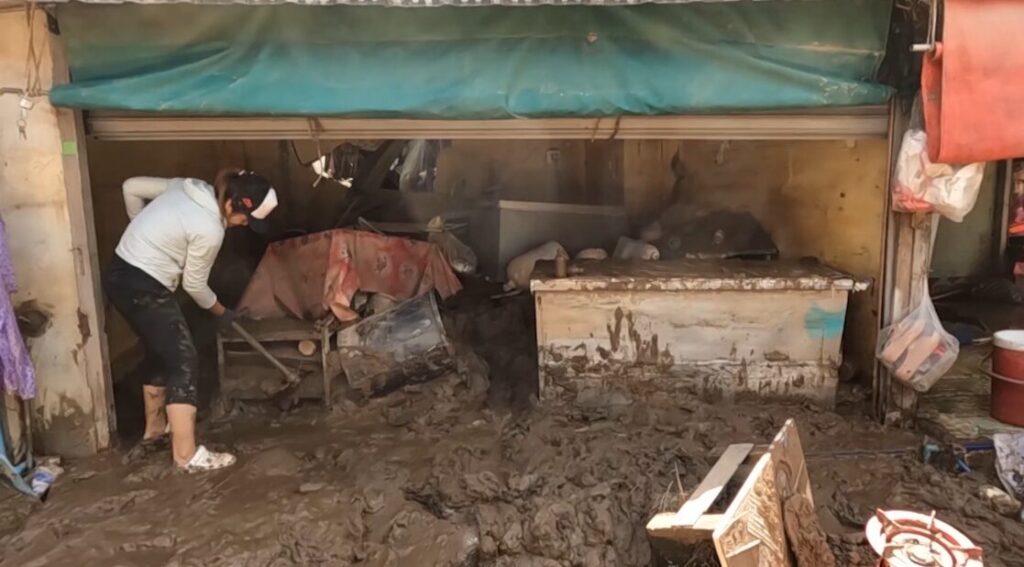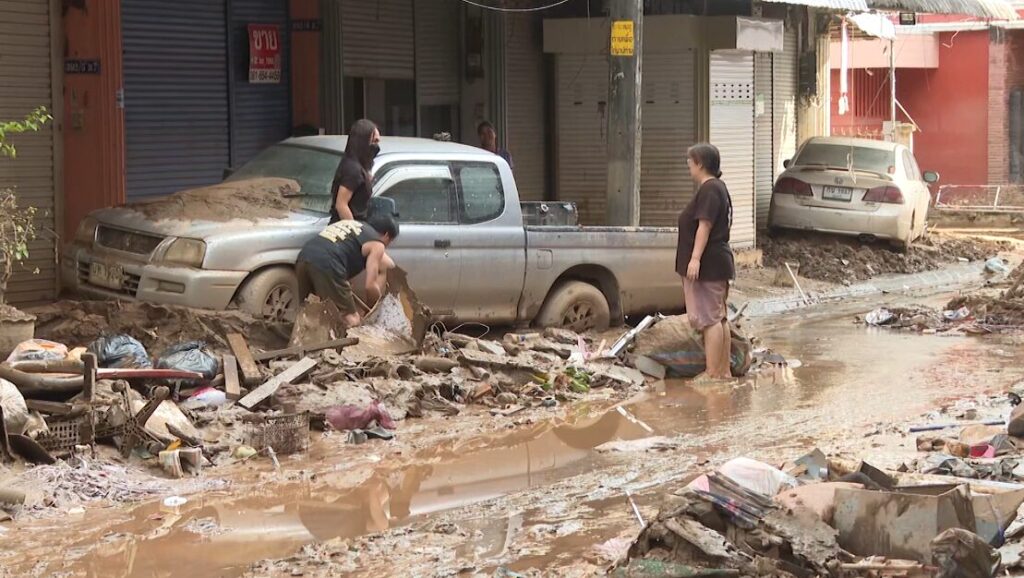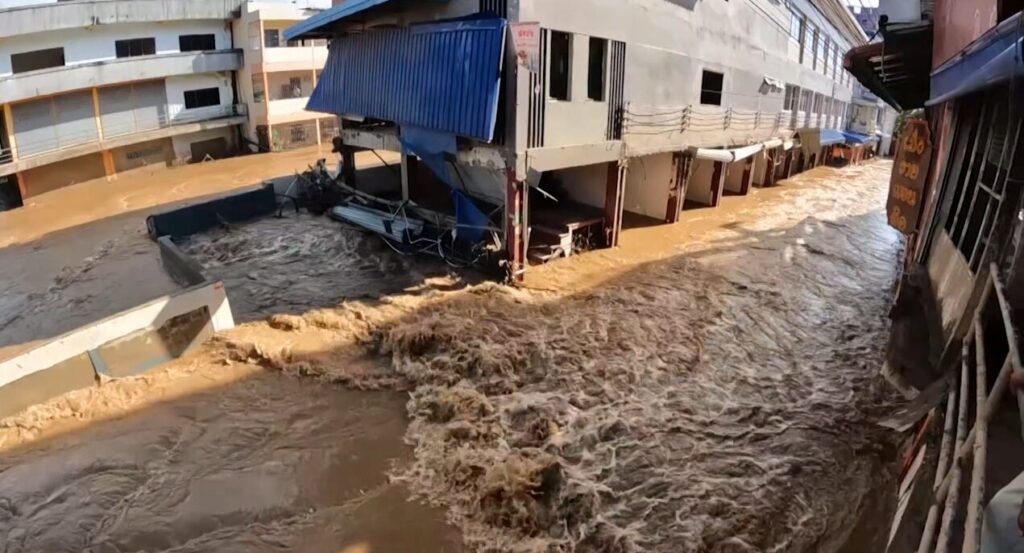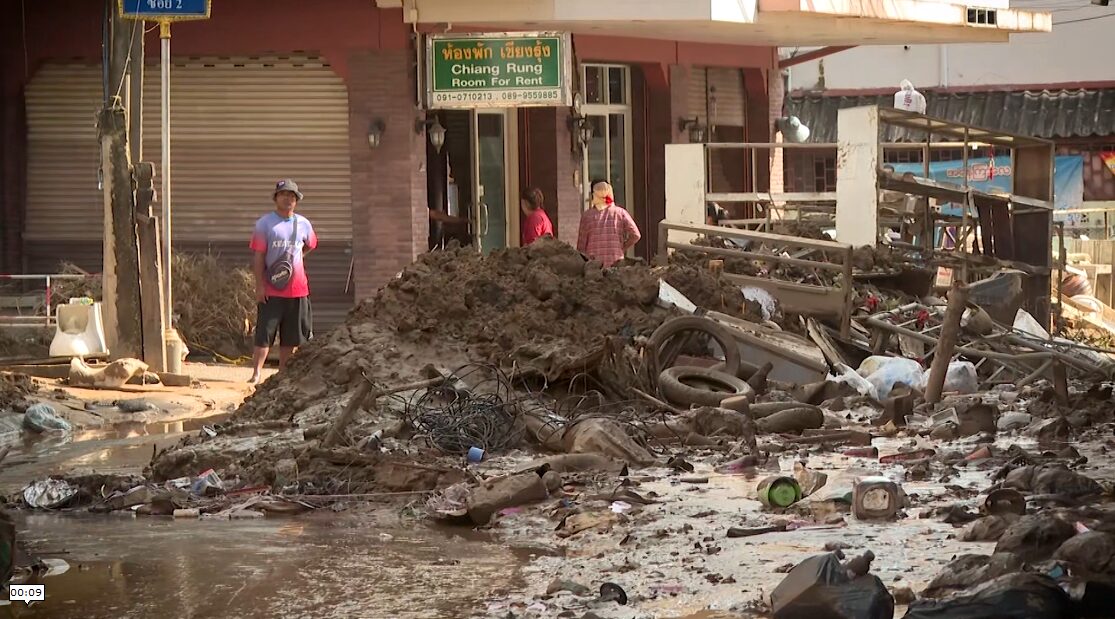CHIANG RAI, Sept 16 (TNA) – The floodwaters that inundated Mae Sai district on the Thai-Myanmar border have receded, but they have left behind a trail of destruction and thick layers of mud that have coated homes and businesses. Many residents are still unable to return to their damaged properties.
Communities along the Mae Sai border continue to grapple with the aftermath of the severe flooding that lasted nearly a week. The extent of the damage and the vast amounts of mud covering the area are evident. Homeowners and shop owners are struggling to clean up the debris left behind by the floodwaters, but the dried mud has become sticky and difficult to remove. With a limited water supply for cleaning, recovery efforts have been slow.

Lhong Boonnam, a 63-year-old Mae Sai native, who has operated a shop selling traditional Tai Lue food for over 30 years said her shop was severely damaged by the floodwaters, with the walls collapsing. She is uncertain about how she will rebuild as she is already struggling financially.
Recovery efforts in Mae Sai are expected to take several days, particularly the removal of the vast amounts of mud. As a result, many residents are still unable to return to their homes and have sought refuge in temporary shelters such as Wat Phrom Wiharn temple. A royally-sponsored kitchen has been set up at the temple to provide food for the displaced.

“My whole house was destroyed,” said Sathit Hortrakool, a resident of Mae Sai who has been staying at the temple since the floods began. “I can’t return home because we can’t remove the mud ourselves.”

The situation is no different across the border in Myanmar’s Tachileik district, where communities are also grappling with severe flooding and mud. Residents are in dire need of food, water, and supplies to help with cleanup efforts. Many have crossed the border into Thailand to purchase essential items such as food, fuel, and cleaning supplies. -819 (TNA)














